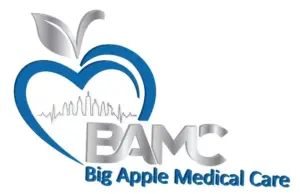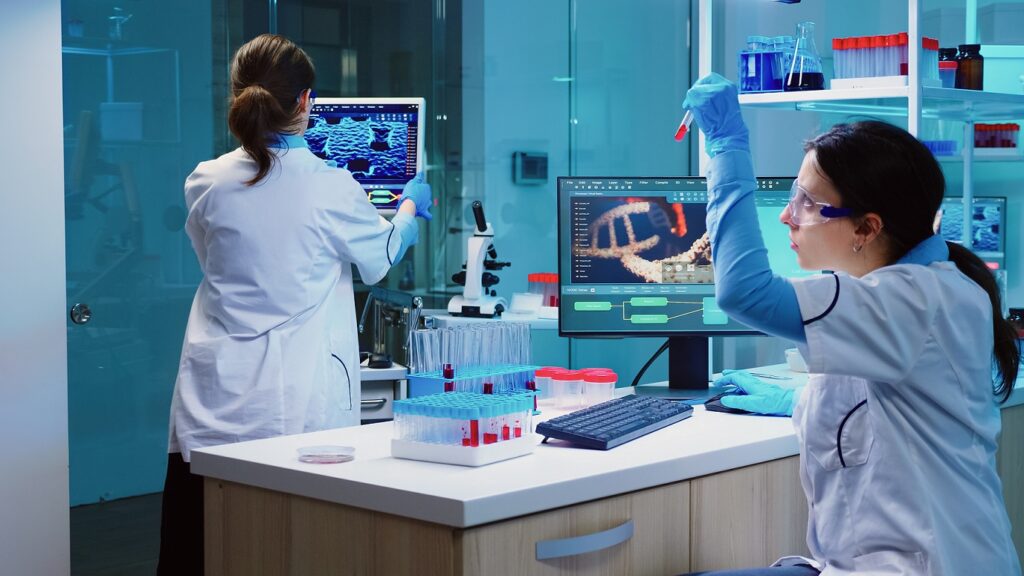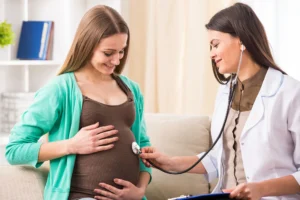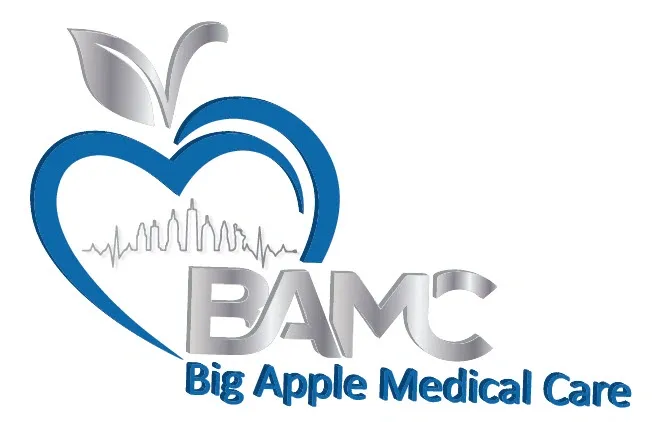Each Cancer treatment is different because cancer is no longer simply “a mass of cells that grow uncontrolled.” Over the past two decades, we have come to understand that each person’s cancer is genetically unique — shaped by specific mutations, gene amplifications, and molecular drivers that fuel its growth, evade immune control, and resist therapy. Thanks to advances in molecular diagnostics and genomic sequencing, we now have the ability to perform targeted oncogene and mutation analysis on tumor tissue (or even blood) to tailor therapy precisely to the molecular vulnerabilities of each cancer. This approach, often called precision oncology or personalized cancer medicine, is revolutionizing how we treat many malignancies — making treatments more effective, less toxic, and more patient-specific.
In this blog, we’ll explain:
-
What oncogenes, driver mutations, and molecular profiling are
-
How labs perform mutation and genomic testing
-
How the results guide personalized treatment decisions
-
Challenges, limitations, and future directions
-
How Big Apple Medical Care can integrate such testing for patients
Key Concepts: Oncogenes, Driver Mutations & Tumor Genomics
Oncogenes, Tumor Suppressors & Mutations
-
Oncogenes are genes that normally help cells grow, survive, and divide; when mutated or overexpressed, they can promote uncontrolled proliferation.
-
In healthy cells, growth and division are tightly regulated. Mutations that convert a proto-oncogene into an oncogene can “push the gas pedal” of growth.
-
Conversely, tumor suppressor genes are those that normally restrain growth or repair damage (like TP53, BRCA1/2, RB1). Loss or mutation of tumor suppressors removes critical “brakes.”
-
A given cancer often harbors a handful of driver mutations (causative changes) in oncogenes or tumor suppressors. A much larger number of passenger mutations accumulate but don’t drive growth directly.
Identifying the oncogenic drivers in a tumor is key, because those are the targets that therapies can aim at — either by blocking mutated proteins, inhibiting downstream pathways, or exploiting dependencies the tumor has developed.
Tumor Heterogeneity & Clonality
-
Tumors evolve over time; they are genetically heterogeneous, with different subclones having different mutations.
-
A biopsy may capture a subset of that heterogeneity; resistance mutations may arise later under treatment.
-
Because of this, repeated sampling (or noninvasive monitoring via circulating tumor DNA) is becoming more important.
Why Mutation Analysis Matters
-
Not all cancers of a particular organ behave the same. For example, lung cancers can be driven by EGFR, KRAS, ALK rearrangements, etc.
-
By knowing which mutation a tumor harbors, physicians can select targeted therapy (e.g., EGFR inhibitors, ALK inhibitors) rather than defaulting to generic chemotherapy.
-
Some mutations also predict response (or resistance) to immunotherapy, chemotherapy, or combination strategies.
-
Moreover, mutation analysis can inform prognosis, surveillance, and enrollment in clinical trials.
As one review puts it, molecular diagnostics are pushing cancer care from “tumor-type + stage” to molecular subtype + actionable alteration.
How Labs Perform Oncogene / Mutation Testing
Sample Collection & Preanalytical Considerations
-
The first step is obtaining tumor tissue (via biopsy or surgical specimen). For hematologic malignancies, bone marrow or blood may suffice.
-
It’s also essential to have matched normal (germline) DNA in many protocols, so we can differentiate between inherited variants and somatic (tumor-specific) mutations.
-
The quality of the specimen (percentage of tumor cells, tissue preservation, fixation methods) is crucial. Poor sample quality can lead to failed or ambiguous results.
Types of Molecular Tests
-
Targeted Gene Panels / Hotspot Panels
-
These focus on well-known cancer genes (often 20–500 genes) where actionable mutations or alterations are known.
-
Advantages: faster turnaround, lower cost, relatively less data to interpret.
-
-
Whole Exome Sequencing (WES) or Whole Genome Sequencing (WGS)
-
Broader scope, capturing all coding genes (exome) or the entire genome (introns, regulatory regions).
-
More comprehensive but costlier, more complex data, and more “variants of uncertain significance” (VUS).
-
-
RNA Sequencing / Fusion Detection / Transcriptomics
-
Some oncogenic drivers are gene fusions (e.g. ALK, ROS1, NTRK) or aberrant splice variants; RNA sequencing helps detect those.
-
Also gives expression data, which can guide therapy (e.g. pathway activation).
-
-
Copy Number Analysis & Structural Variants / CNVs
-
Gene amplifications or deletions (e.g. HER2 amplification in breast cancer) can be critical.
-
Structural rearrangements, large deletions, translocations, etc.
-
-
Circulating Tumor DNA (ctDNA) / Liquid Biopsy
-
DNA fragments shed by tumor cells into the bloodstream. A noninvasive way to assess mutations, track tumor burden, detect minimal residual disease, or catch resistance mutations.
-
Techniques like CAPP-Seq (Cancer Personalized Profiling by deep Sequencing) allow detection of mutant DNA at very low frequencies in blood.
-
Tumor-informed assays (tracking patient-specific mutations over time) are emerging in clinical monitoring.
-
Bioinformatics & Interpretation
-
Raw sequencing data must pass through pipelines: alignment, variant calling, filtering, annotation (matching to known databases).
-
Many variants are variants of uncertain significance (VUS) that have unclear implications.
-
Interpreting which mutations are actionable requires linking to curated databases (OncoKB, COSMIC, ClinVar, etc.) and up-to-date evidence.
-
A molecular tumor board — involving oncologists, pathologists, bioinformaticians — often reviews complex cases to decide which mutations should guide therapy.
How Mutation Results Guide Personalized Therapy
Once the report is in hand, how do clinicians translate it into therapy? Here are the major ways:
Identifying “Actionable” Mutations & Targets
Not every mutation is targetable with current drugs; only a subset is considered actionable (i.e. with approved therapies or trial options). Six common classes:
-
Oncogene activating mutations (e.g. EGFR, BRAF)
-
Gene fusions / rearrangements (e.g. ALK, ROS1, RET, NTRK)
-
Gene amplifications / overexpression (e.g. HER2)
-
DNA damage repair deficiencies / homologous recombination deficiency (HRD) (e.g. BRCA1/2)
-
Mismatch repair deficiency / microsatellite instability (MSI-High) — predicting immunotherapy sensitivity
-
Tumor mutation burden (TMB) status
For example:
-
In non-small cell lung cancer (NSCLC), EGFR mutations or ALK fusions guide use of EGFR or ALK inhibitors.
-
In breast cancer, HER2 amplification drives trastuzumab, pertuzumab, newer antibody-drug conjugates, etc.
-
In melanoma, BRAF V600E mutation directs use of BRAF/MEK inhibitors.
-
For tumors with mismatch repair deficiency or high TMB, immune checkpoint inhibitors (e.g. pembrolizumab) may be favored.
-
Tumors with BRCA mutations or HRD may be sensitive to PARP inhibitors or platinum agents.
Resistance Mutations & Adaptive Strategy
-
Tumors can develop resistance mutations after targeted therapy — e.g. in EGFR T790M, BRAF amplification, or bypass pathway activation.
-
Repeat (or serial) genomic analysis can detect resistance mechanisms and guide second-line therapy.
-
Liquid biopsy is especially useful to monitor evolving resistance without repeated invasive biopsy.
Combination Therapies & Synthetic Lethality
-
Sometimes targeting just one driver is insufficient. Combination therapies (target + immunotherapy, multiple pathway blockade) may overcome resistance.
-
Synthetic lethality: targeting a vulnerability that becomes critical only in the presence of a certain mutation.
Prognosis, Trial Eligibility & Beyond
-
Some mutations have prognostic significance (e.g. TP53 mutations often correlate with worse outcomes).
-
Mutation reports often come with clinical trial options the patient might be eligible for, especially in advanced disease.
-
In some centers, an agnostic approach (tumor-agnostic therapy) is used: therapies targeting a mutation regardless of tumor origin.
A large real-world genomics study of 78,000+ patients identified 776 mutation–treatment associations across 20 cancer types, highlighting how mutation calls correlate with survival and can guide therapy selection.
Challenges, Limitations & Ethical Considerations
While the promise of precision oncology is immense, there are caveats.
Incomplete Actionability
-
Only a small fraction of mutations are truly “actionable” today. In one pan-cancer analysis, only 5.2% of tumors had an alteration with a therapy approved or guideline-endorsed; another 3.5% had options in late-phase trials.
-
Many tumors carry co-occurring driver alterations or pathway cross-talk, complicating predictions and sometimes blunting response to single-agent targeted therapy.
False Positives, Variants of Uncertain Significance & Interpretation
-
Some variant calls may be artifacts or low-confidence.
-
VUS remain a major gray zone; overinterpreting them can lead to wasteful or harmful therapy.
-
Interpreting a mutation in context — tumor type, variant allele fraction, clonality, functional studies — is complex.
Tumor Heterogeneity & Sampling Bias
-
Biopsy may miss subclones that harbor resistance side paths.
-
Genetic evolution under therapy may change the dominant driver over time.
Cost, Infrastructure & Access
-
Sequencing tests, analysis, and molecular tumor boards are expensive and require specialized infrastructure.
-
In many regions, insurance coverage or reimbursement is limited.
Ethical & Genomic Privacy Concerns
-
Germline mutations (inherited) may be incidentally uncovered, implicating patient and family.
-
Genetic data privacy, consent, and counseling are critical.
Turnaround Time & Clinical Relevance
-
In aggressive tumors, waiting weeks for sequencing may be clinically impractical; some clinicians must start therapy before results.
-
Sometimes therapy based on mutation may show benefit only modestly or for limited duration.
Keeping Up with Evidence
-
The knowledge base evolves rapidly: new targeted drugs, resistance mechanisms, biomarker definitions. Clinicians must constantly update.
How Big Apple Medical Care Can Use Oncogene & Mutation Testing
For a medical center like Big Apple Medical Care, integrating oncogene / mutation analysis into cancer care has multiple roles:
Building a Molecular Oncology Program
-
Establish or partner with a certified molecular diagnostics lab (or reference lab) that performs NGS, gene panels, RNA fusion testing, ctDNA assays.
-
Implement robust preanalytic protocols (biopsy handling, fixation, tumor percentage thresholds).
-
Form a molecular tumor board: oncologists, pathologists, bioinformaticians, genetic counselors collaborating weekly to interpret complex cases.
-
Maintain access to curated knowledge bases (OncoKB, ClinVar, COSMIC) and literature updates for interpretation.
Patient Workflow
-
Patient selection & consent — which patients should be offered mutation testing? (Often advanced/metastatic disease, recurrent disease, or where standard options are exhausted.)
-
Specimen acquisition & handling — ensuring good quality biopsy or archival tissue.
-
Sequencing / genomic assay
-
Bioinformatics & interpretation
-
Therapy decision & communication — review in tumor board, present results and options to patient, assess eligibility for targeted therapy or trial.
-
Follow-up and repeat testing (e.g. liquid biopsy) to monitor resistance or recurrence.
Clinical Integration & Value
-
Use mutation results to guide first-line decisionmaking (when possible).
-
Use mutation data to stratify patients for immunotherapy vs targeted vs chemotherapy.
-
Use mutation analysis for trial matching and enrollment.
-
Use serial ctDNA monitoring to detect minimal residual disease, early relapse, or emergence of resistance.
Patient Communication & Counseling
-
Explain benefits, limitations, possible outcomes of sequencing.
-
Genetic counseling support if germline findings emerge.
-
Ensure patients understand that not every test yields an actionable result.
Quality Assurance & Outcomes Monitoring
-
Track how often mutation results lead to actionable changes in therapy (“actionability rate”).
-
Monitor patient outcomes (response, progression-free survival) in those whose therapy was guided by mutation testing vs standard approaches.
-
Participate in registries or collaborations to accumulate real-world evidence.
Future Directions & Emerging Trends
Multi-Omics & Integrative Profiling
-
Beyond DNA, combining RNA, proteomics, epigenomics, microRNAs, etc. to paint a fuller picture of tumor biology.
-
Integrating pathway activation scores, tumor microenvironment data, immune signature profiling.
Artificial Intelligence & Computational Prediction
-
Use machine learning models to predict drug response from mutation patterns, expression signatures, and clinical data.
-
Deep learning approaches to interpret VUS or complex structural variants.
Tumor-Agnostic Therapies
-
Drugs targeting rare mutations across cancer types (e.g. NTRK fusions regardless of origin).
-
Trials that enroll patients by molecular alteration rather than tumor site (basket trials).
Liquid Biopsy Advances & Minimal Residual Disease Monitoring
-
Better sensitivity to detect relapse early, before imaging detection.
-
Real-time adaptation of therapy based on emerging mutations in plasma.
Resistance Mechanism Cataloguing & Secondary Targeting
-
As patients fail one targeted therapy, cataloging resistance mutations (e.g. bypass pathway activation, secondary mutations) and designing second-generation inhibitors.
Broader Accessibility & Lower Costs
-
As technology matures, costs of NGS and computational pipelines will drop, enabling broader uptake in regions that currently lack resources.
Summary & Key Takeaways
-
Oncogene and mutation analysis is at the heart of precision oncology: by identifying driver mutations in a patient’s tumor, therapy can be tailored specifically rather than using one-size-fits-all chemotherapy.
-
Labs perform targeted panels, whole exome/genome sequencing, RNA fusion testing, and ctDNA assays — all combined with bioinformatics to interpret actionable changes.
-
Mutation results guide therapy choice (targeted agents, immunotherapy, combination regimens), help detect resistance, and enable trial matching.
-
Challenges remain: not all mutations are actionable, tumor heterogeneity, cost, interpretative ambiguity, and infrastructure constraints.
-
Despite limitations, the future is bright: multi-omics, AI, liquid biopsies, and tumor-agnostic therapies will further refine personalized cancer care.
-
For Big Apple Medical Care, integrating molecular diagnostic testing and tumor board infrastructure can place the institution at the forefront of modern oncology — improving outcomes and offering patients more precise, less toxic options.







